While some people may define couching as reclining on a well-padded sofa, the sewing definition of the term is a lot more fun! Couching is a creative embellishment technique of securing one or more strands of trim to a base fabric.
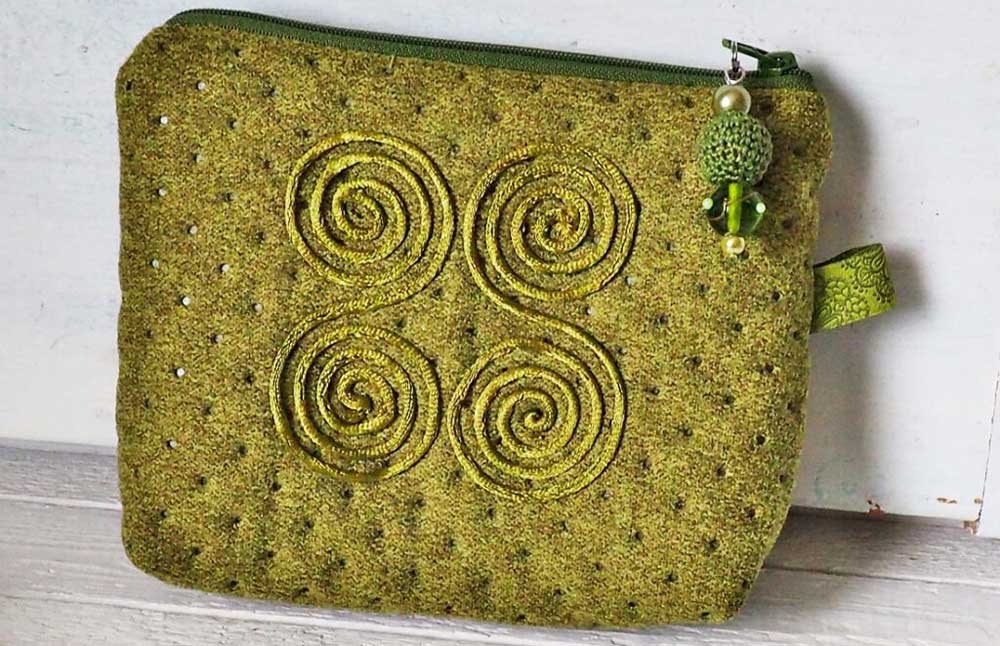
Great Choices
Choose almost any kind of trim for your project—embroidery floss, yarn, cord, braid or even narrow strips of fabric. Then pick a thread—any kind is fair game—a matte cotton, a shiny rayon or metallic, a solid or variegated hue, and even monofilament if you don’t want stitching to show. Use a contrast color for emphasis, or a matching color to highlight the trim itself and not the couching stitching.
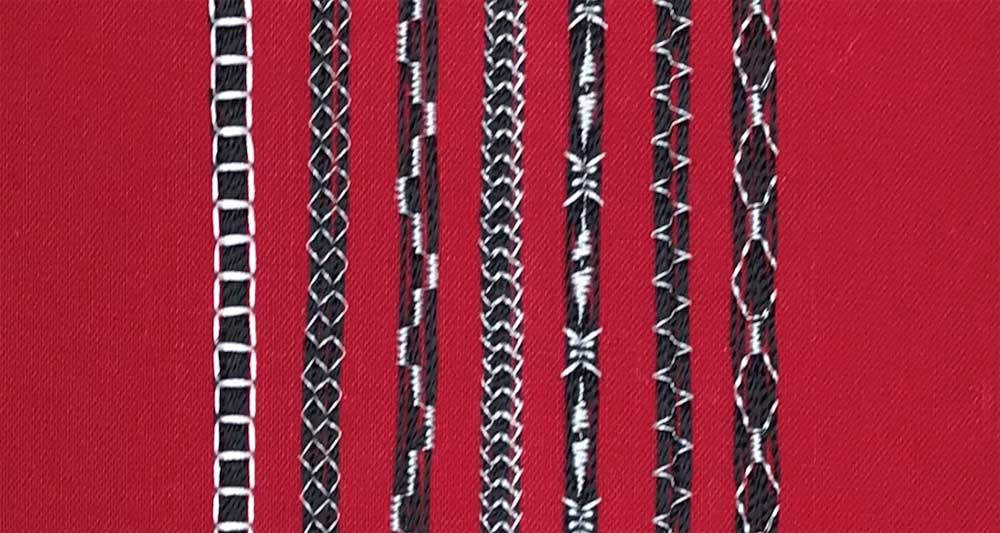
A simple zigzag stitch (see above) will work to anchor strands, or perhaps you prefer a more elaborate decorative stitch pattern. The criteria for choosing—it has to be wide enough to span the trim(s) you’re couching, and it can’t be too dense that it creates uneven feeding issues.
A universal needle works well for most couching applications, in a size consistent with the fabric weight. For delicate knits, try a ballpoint or stretch needle to avoid damaging the fabric.
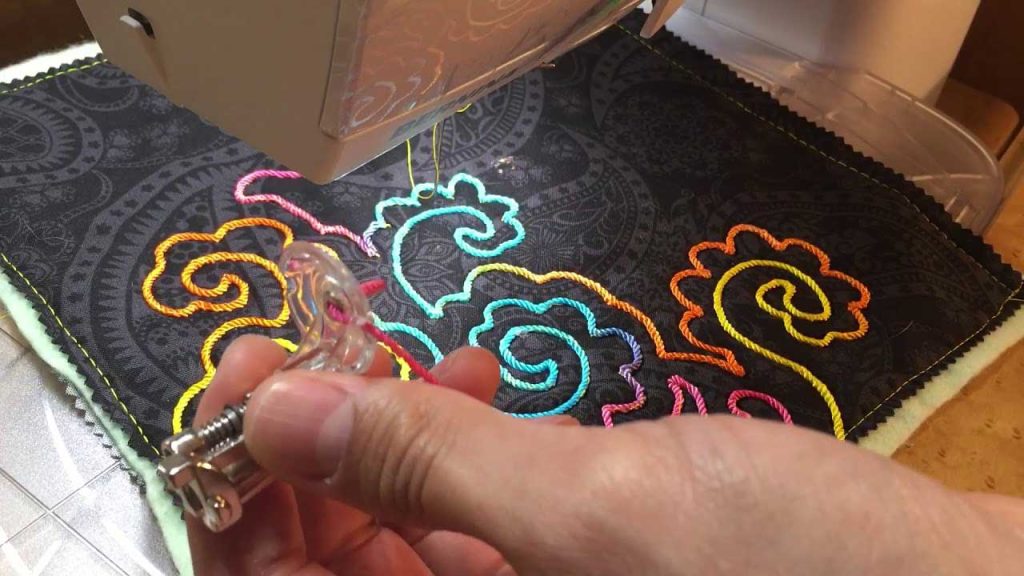
Depending on the weight of the fabric base, it’s usually a good idea to use a stabilizer behind to avoid puckering. For stable fabrics, a tear-away stabilizer works well; for stretchier or lighter weight fabrics, a knit interfacing on the fabric underside is helpful, in addition to the stabilizer.
Foot Notes
Then comes the choice of presser foot, testing is the name of the game. Simple couching can be done using a regular zigzag or satin-stitch foot if the trim isn’t too bulky. Most machine brands offer a couching or braiding foot, with a recessed area on the underside to handle tubular or bulky trims.
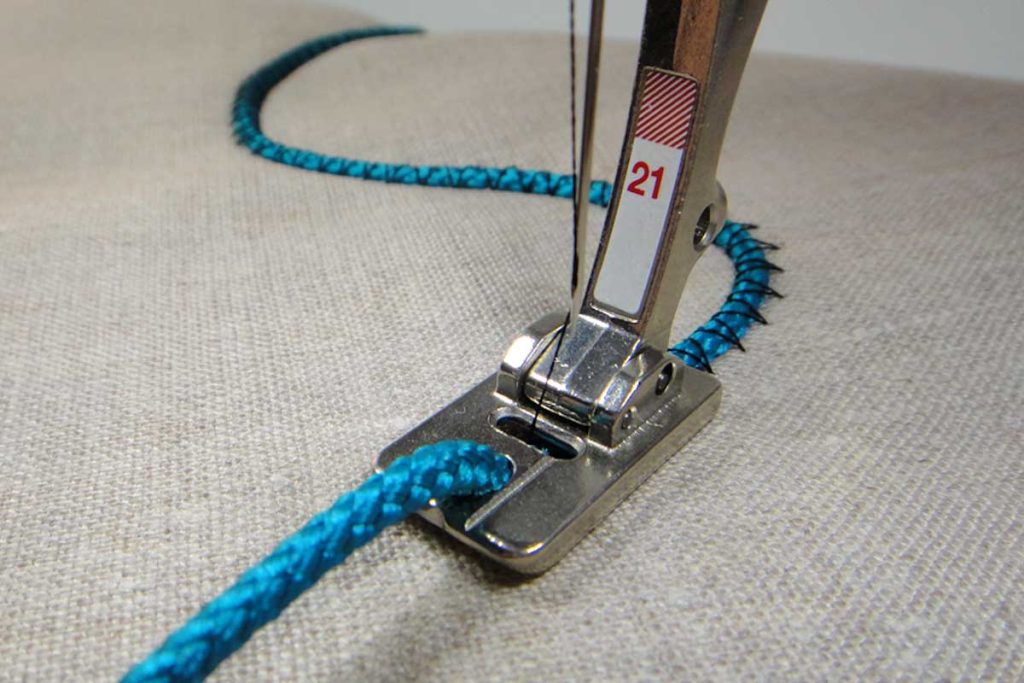
If you want to couch multiple strands at the same time, check out a multi-hole foot that aligns and separates the trim strands as you stitch to keep them organized.
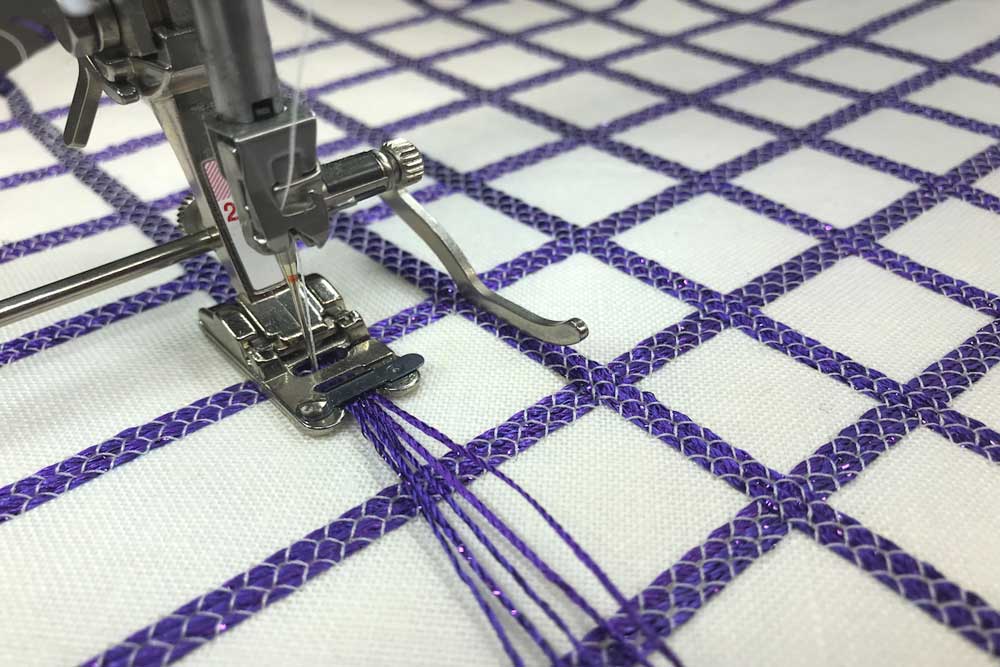
Begin by reading your owner’s manual to see the types of feet available for your machine, then test-stitch using the trim of choice to check for even feeding.
Couching Methods
There are three ways to couch:
- Using a specialty presser foot and letting the feed-dogs feed the fabric and trim through the machine.
- Couching can be done with free-motion stitching
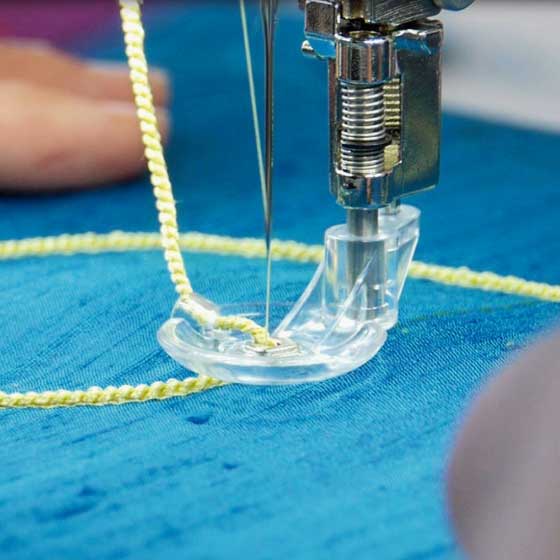
- Couching can also be done using specially digitized designs made for the addition of yarns or trim.
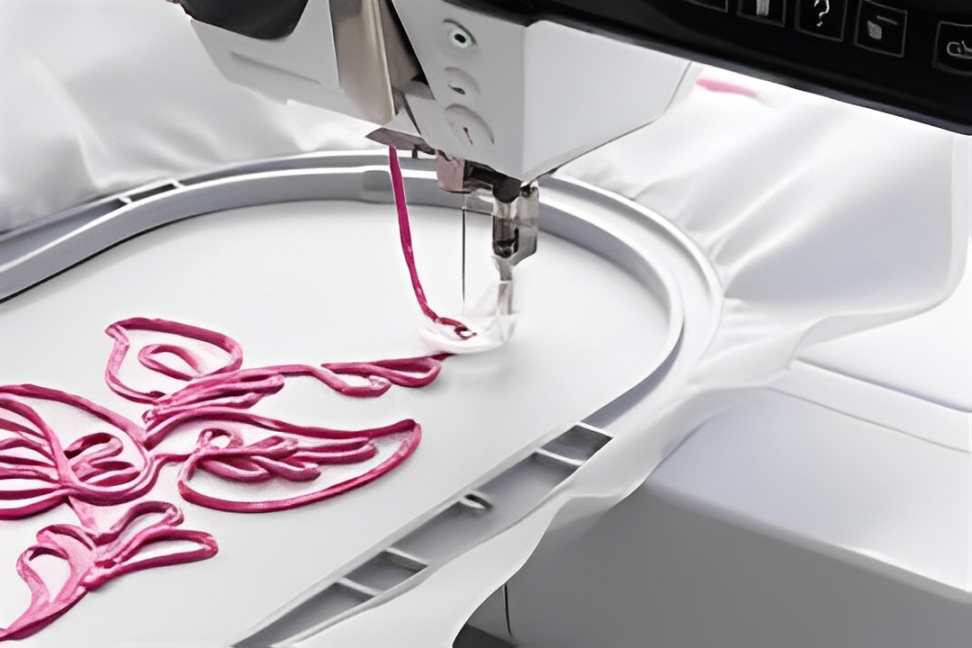
If you’re using embroidery software, stabilize, hoop the area and stitch following the instructions with the chosen motif.
To couch traditionally or use free-motion work, mark the design on the right side of the fabric using a removable marking method. This can be in the form of simple lines to follow, or an area to be filled in. It’s helpful if the couching line(s) can end in a seam for secure anchoring, but that’s not always possible.
As you couch, if you need to turn a corner, leave the needle down in the fabric, then lift the foot and continue sewing.
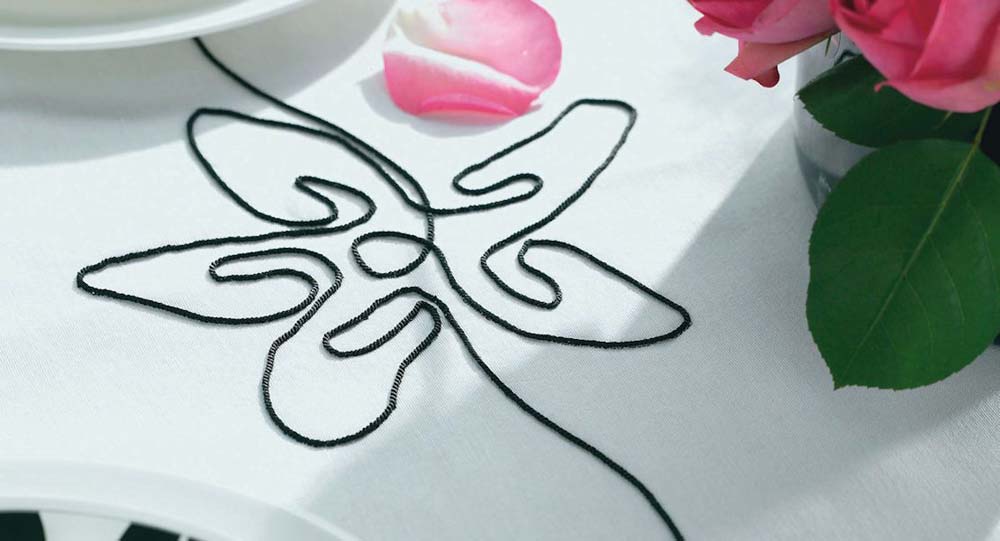
If you can’t end the couched design in a seam, leave the trim ends long enough to thread into a needle and bring them to the underside along with the couching threads. Knot to secure.
For free-motion couching, set your machine for free-motion stitching (see the manual for your brand), choose a presser foot that will help feed the trim while you move to fill the desired area. Free-motion couching is most often done using monofilament thread so the couched threads are the highlight and not the stitching itself.
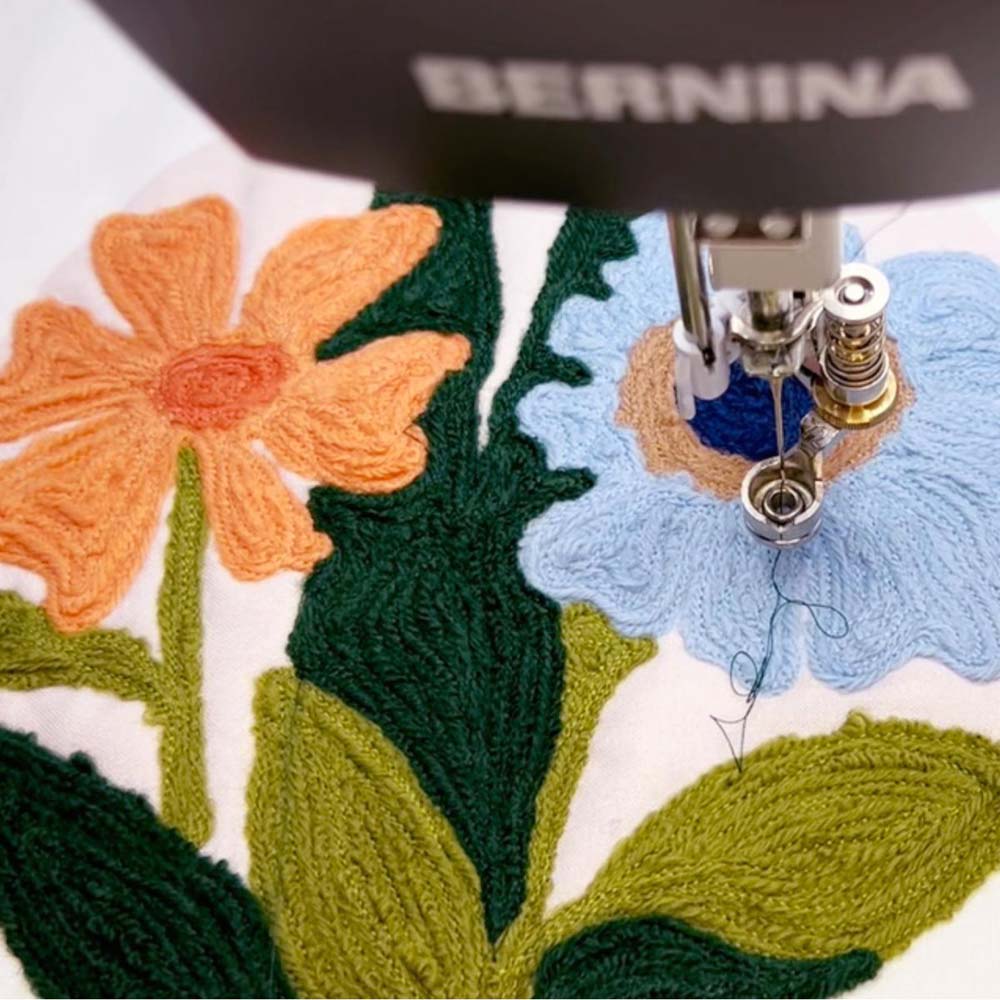
Fancy Dancy
It’s easy to add beads or charms to the trim being couched, but this requires extra care when the couching is being done to avoid hitting those additions.
- Simply manually turn the hand-wheel to step by the bead or other addition and begin stitching again on the other side of it.
- Combine rows of decorative stitching with couching for added accents.
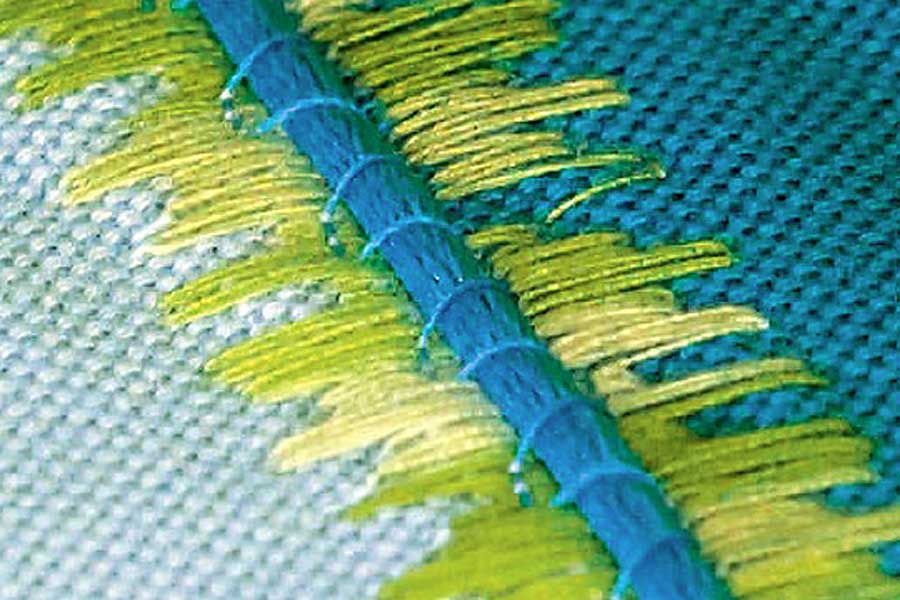
- Press your couched area over a towel or other padded surface to avoid flattening the trim.
Before You Begin: Make a sampler of different stitches and threads to see what works best with your trim to give you the look you like.
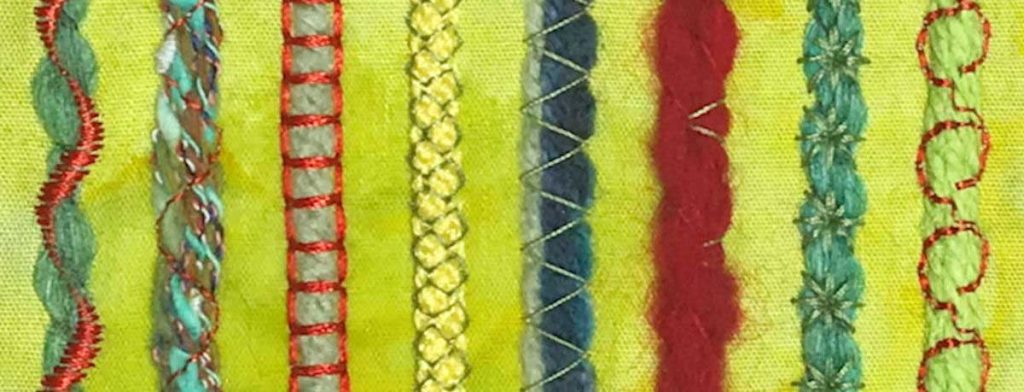
All photos courtesy of Bernina
~Linda Griepentrog is the owner of G Wiz Creative Services and she does writing, editing and designing for companies in the sewing, crafting and quilting industries. In addition, she escorts fabric shopping tours to Hong Kong. She lives at the Oregon Coast with her husband Keith, and three dogs, Yohnuh, Abby, and Lizzie. Contact her at gwizdesigns@aol.com.





